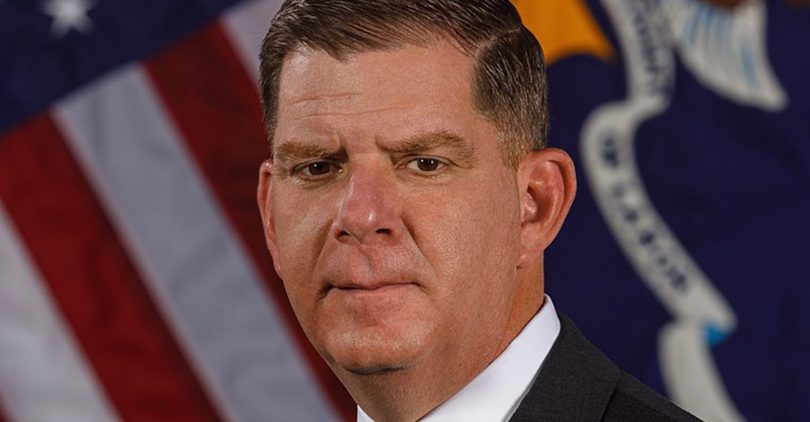By Stacy M. Brown
NNPA Senior National
Correspondent
The U.S. Department of Labor continues to engage in deep conversations about diversity, equity, and inclusion, as the most recent jobs report shows a dismal 9.7 percent unemployment rate among African Americans.
In a rare one-on-one interview with the National Newspaper Publishers Association (NNPA), Labor Secretary Marty Walsh said the Biden-Harris administration isn’t just about getting jobs for African Americans.
The administration wants to level the playing field, which would allow those in communities of color to obtain good-paying jobs, ascend to the middle class, and be rewarded when it comes time for promotions and other opportunities to advance.

“I think we are seeing 500,000 jobs per month added to the economy on average over the last three months, and we saw some positive signs in the hospitality industry this month,” said Secretary Walsh.
“We saw more Americans working and looking for work in March and April, which are all good signs. But the unemployment rate in the Black community is still 9.7 percent, and that’s too high.”
NDG 5/20: ‘Shop Talk’ building a relationship between communities and those who protect them
The latest jobs report revealed that the U.S. economy added 266,000 jobs in April and an overall unemployment rate of 6.1 percent.
While the unemployment rate for African Americans stood at 9.7 percent, it was 7.9 percent for Hispanics, 5.7 percent for Asians, and 5.3 percent for Whites.
“Whether I’m speaking as the Secretary of Labor or the former mayor of Boston, we have a lot of work to do when it comes to equity when it comes to African Americans and other communities of color,” Secretary Walsh demanded.
NDG 5/13: Frustration continues to rise in the case of Marvin Scott, III’s death
“When we talk about building back, we have to be real intentional and put the focus on how do we build back to give people of color an opportunity to be successful in the 21st-century economy.”
Secretary Walsh continued:
“The President made equity a center point. We have to be focused on job training as well. This is an issue that has been in our country forever. I think we have a President and Vice President focused on closing the economic opportunity gaps and creating real pathways into the middle class. If we don’t do it correctly, we are going to lose another generation of young people to poverty.”
Secretary Walsh adamantly rebuked suggestions that African Americans simply have decided not to pursue available jobs.
NDG 5/6: DOJ seeks to clean up police departments around the country
“In my experience, there are lots of people in the African American community doing lots of great things. We have to amplify our message and get more people engaged in the conversation,” Secretary Walsh remarked.
“We can’t say that African Americans are not doing enough. We have to say as a society, and businesses need to do more. We have to create pathways, and when people get in a company, they have to get opportunities to advance themselves whether it is through education or job opportunities in leadership positions.”
The secretary noted that all workforce development and apprenticeship programs must include individuals of color and women. Any grant opportunities should contain an insistence that programs include everyone, not just White people, Secretary Walsh said.
He scoffed at the suggestion that the Black unemployment rate is high because many younger Blacks are electing to start new businesses instead of joining the traditional employment pool.
“I’m not fully there on that argument of people of color not coming back to the workforce,” Secretary Walsh notes in response.
“We are still in a pandemic, and remember, we shut the economy down in a matter of weeks, so we’re not going to see people go back as they went out.
“When you start thinking about full in-school learning, strong childcare, and people getting their shots, they will go back to work. Everyone wants to be able to put food on the table for their children. I’m not sold that there are 8 million jobs, and people don’t want to go back to work.”




